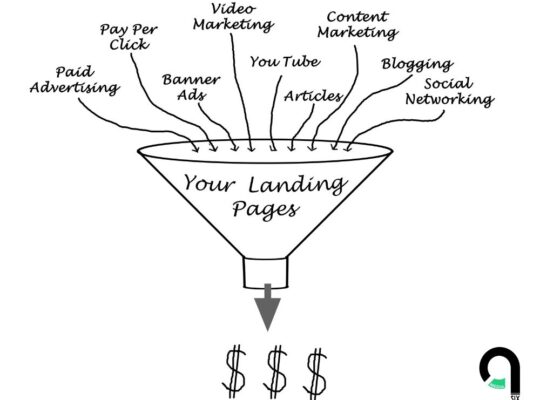If you’ve ever found ChatGPT’s answers too vague or generic, you’re not alone.
But here’s the truth: ChatGPT performs best in a conversational, context-rich environment, not a robotic Q&A format.
This guide shows you and your team how to use ChatGPT like a pro Amazon seller, copywriter, and ecommerce strategist. You’ll learn how to train ChatGPT on your brand and products, write better prompts, and streamline your Amazon content workflows.
Why Most Prompts Fail
Most prompts fail because it’s up to you, to give context to your request. Think of this like you’d think of a job description. Structure your prompt in a way where CGPT knows what the role is, what tase you’d like it to perform, and how you’d like to results formatted. Here is a great cheat sheet that I found on instagram:

Here are a couple prompt examples:
Bad Prompt Example:
What are the best benefits and features of a stainless steel potato ricer?
Why it fails: It’s generic and lacks context. ChatGPT doesn’t know who your customer is, what your product’s USP is, or what tone to use.
Better Prompt Example:
Please act as our marketing director. Our customer is a 32-year-old female living in an upscale apartment in New York City. She loves cooking and sharing meals on Instagram. We sell a stainless steel manual potato ricer. What are 5 main benefits and 5 main features we should focus on in our copywriting that she would enjoy the most?
Great! We’re moving right along…
If this is enough to refine your prompts as a starting place. STOP READING NOW… go take action! Come back once you hit another roadblock. But, if you’re past that already, keep on reading.
Step 1: Train ChatGPT on Your Amazon Business
Before writing anything, you must train ChatGPT with context about your business. Use these starter prompts to teach it what it needs to know:
Business Overview
Please provide a general overview of your business, including name, industry, and product offerings.
Target Audience
Who is your target customer? Share demographic, geographic, and lifestyle details.
Unique Selling Proposition (USP)
What sets your products apart from competitors?
Business Goals
What outcomes are you aiming for? (e.g. sales growth, better conversions, reduced ACoS)
Brand Voice and Tone
How should ChatGPT sound when writing for your brand? (e.g. warm, witty, professional, luxury)
Writing Style
Describe your sentence structure, vocabulary, formatting preferences, and any quirks.
Step 2: Use ChatGPT for Amazon Product Titles
To write optimized titles under 200 characters, use this prompt:
Prompt Example:
Please write an Amazon Product Title that does not exceed 200 characters and places our brand (Brand X) in the beginning followed by: French Vanilla K Cup Coffee Pods Organic Recyclable Compatible With Keurig Light Roast 27 Count
Result Example:
Brand X French Vanilla K Cup Coffee Pods – Organic, Recyclable, Keurig Compatible – Light Roast – 27 Count
Step 3: Generate Amazon Bullet Points
Once trained, use this structure for compelling bullet points:
Prompt Example:
Please write 5 bullet points for recyclable K Cups. Our buyer supports small businesses and values eco-conscious choices. They also appreciate our 20% profit-sharing with coffee farmers. Use power and sensory words. Include: Recyclable, 20% Profit Sharing, French Roast, Light Roast, Made in USA, Organic.
Formatting Tip: Use a short benefit phrase in caps, followed by a detailed sentence.
Step 4: Write Sponsored Brands Headline Ads
These 50-character headlines are prime real estate for emotional and logical persuasion.
Prompt Example:
Please act as our Amazon PPC specialist and write 10 headlines under 50 characters for our extendable pond scraping tool. Focus on emotion, logic, power words, and our buyer persona.
Headline Ideas:
- Transform Your Pond: Clean, Clear, Captivating
- Experience Serenity: Crystal Clear Waters
- Discover Pond Bliss: Easy Maintenance
Step 5: Craft Amazon Post Captions
Amazon Posts boost SEO and product visibility. Keep captions under 150 characters, with no hashtags.
Prompt Example:
Act as our social media marketer. Write 10 Amazon Post captions about our cast iron Dutch oven. Focus on emotion, logic, and buyer benefits. No hashtags.
Step 6: Optimize Listings with Keywords
Use ChatGPT to revise listings and include missing keywords:
Prompt Example:
I’m going to share our product title, 5 bullet points, and missing keywords. Please rewrite both to include the keywords. Title must be under 220 characters. Bullets under 200.
Step 7: Improve Customer Service with AI
Use ChatGPT to respond to customer complaints in your brand voice.
Prompt Example:
We received this email from an unhappy customer: (insert message). Please write a warm, helpful response that resolves their issue and makes them feel heard.
Step 8: Turn Negative Reviews into Loyalty
You can’t ask for review edits, but you can provide service that inspires it.
Prompt Example:
(Insert negative review). Write a brand-aligned message apologizing and offering a refund. Aim to win back trust without explicitly asking for a review change.
Step 9: Extract Gold from Reviews
Summarize competitor reviews to gain product intelligence:
Prompt Example:
Paste 100+ review bodies. Ask:
“Please summarize all the positives and negatives from these Amazon product reviews into bullet points.”
Then ask: “Turn the negatives into positive benefit statements for our product.”Use these insights in your:
- Bullet points
- A+ Content
- Marketing ads
- Headlines
Final Thoughts
ChatGPT is a powerful tool for Amazon sellers — but only if you use it right. By giving it clear direction, brand training, and your buyer persona, you can:
- Save time
- Write better content
- Reduce ad costs
- Improve conversions
- Stay ahead of the competition
Want a done-for-you SOP template version of this? Or help building internal workflows? Reach out, and I’ll get your team set up with everything you need.







